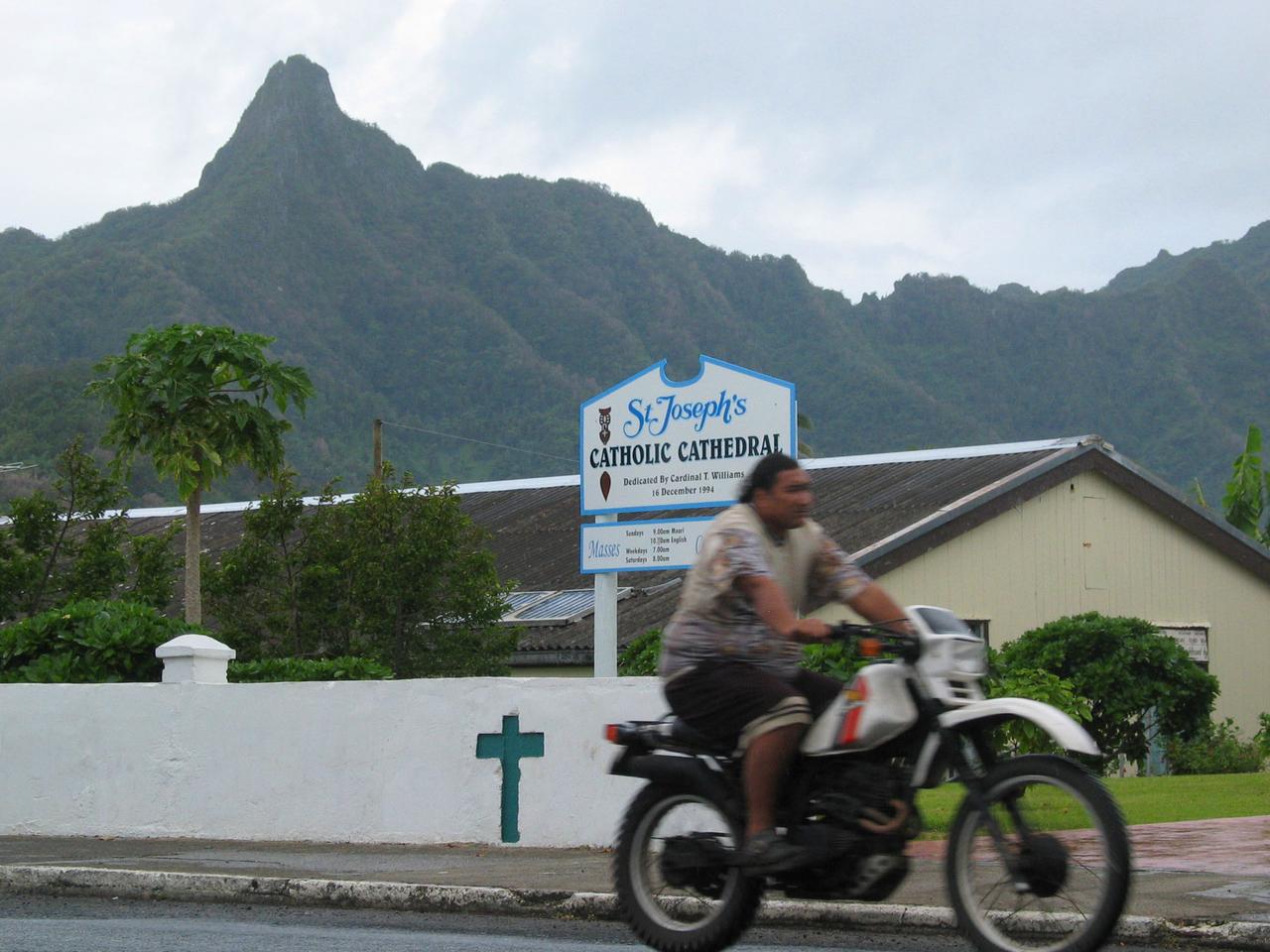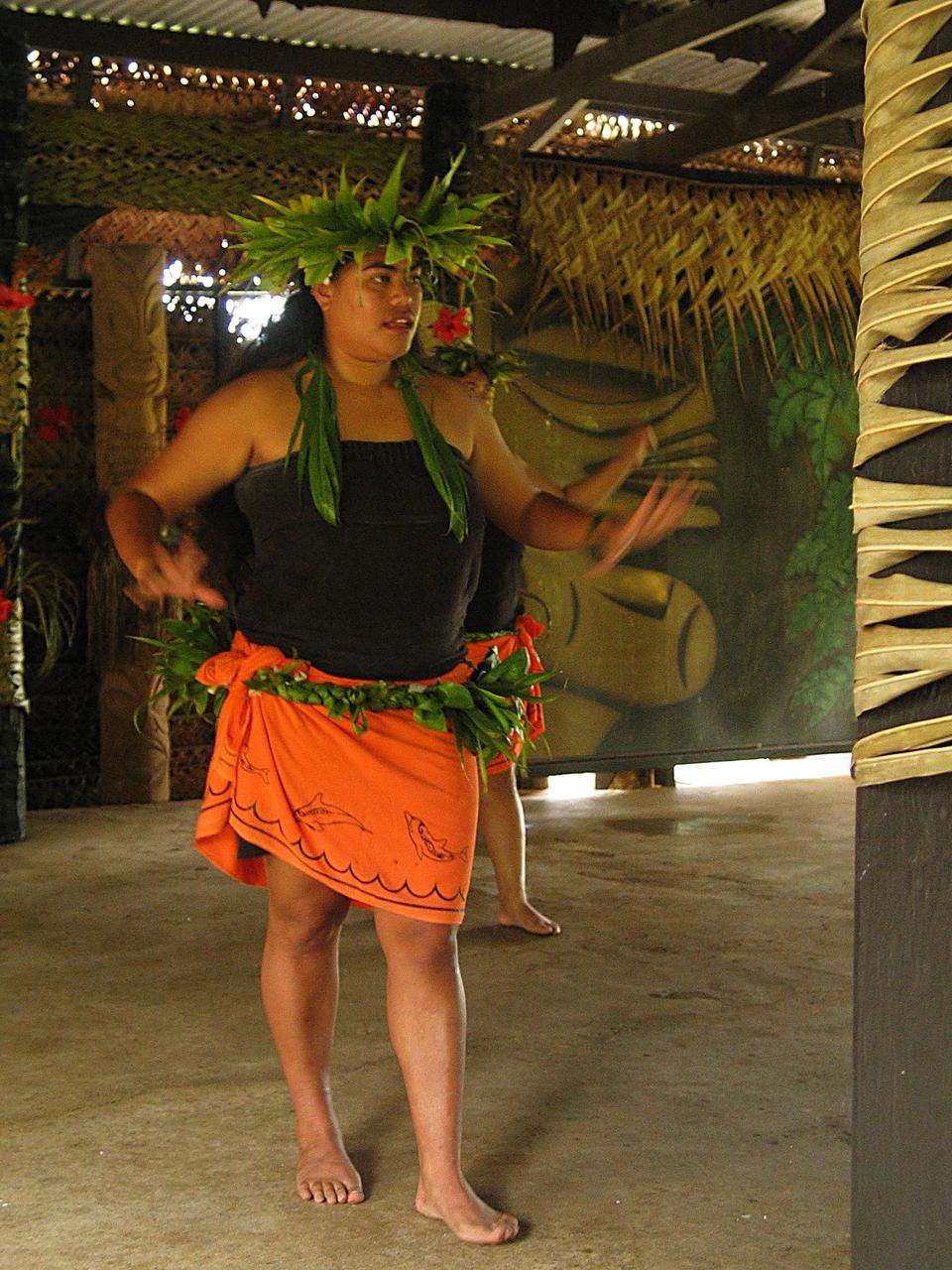The Avarua Report
Hi everyone, Kia Orana! (“May you live on!”)
This report comes earlier than I expected - if I wait any more, it’ll be so long that you busy people might despair and just hit “delete” without reading.
Trajectory
Flew out of Melbourne, via Auckland (where the speech suddenly changed from Aussie to Kiwi... weird) to Rarotonga. Spent ten days here, and flying tomorrow to Aitutaki (another Cook Island).
We Are on the Map
Shopping for groceries in Melbourne’s St. Kilda neighbourhood, I stumbled across an institution that I’ve heard of, but never before seen - the Israeli food rack. It caters to homesick Israeli expats, as well as some orthodox Jews who just have to have a specific rabbi’s signature on their food before they can eat it. There was matza bread, plus the usual suspects of bamba, bissli, soup almonds (shkedei marak) and a bunch of other things. What I can’t figure out is why anyone would go to the trouble of shipping MANA HAMA instant meals from Israel to Oz. “Haven’t the Jewish people suffered enough?” If you’re in Australia/NZ and you fancy a shot of pure monosodium glutamate, just pick up the nearest Maggi product. Sheesh.

The Hitchhiker’s Guide to Rarotonga
Hitching on Raro is easy - there’s just one major road, going in a circle around the perimeter of the island. If you stand on the correct side of the road, every car (or scooter) that passes is going in your direction. If you stand on the other side you’ll also get where you want to go - but it will take longer.
Not everybody stops, but enough people do that it’s no problem. If the rain starts, your chances of catching a ride go up significantly.
There was a rumor that the western hitchhiking sign (with the thumb up) is a rude gesture in Polynesia, but it turned out to be nonsense.
A towel is not necessary, but a hat, sunglasses and sunscreen are a good idea. If you’re a local you don’t bother with these; but if you’re a local, you don’t hitchhike - you ride your motor scooter. Many tourists also ride scooters. Others ride in cars.
And some people’s holiday in paradise just wouldn’t be complete without a shiny rented sports car or an SUV. It’s hard to explain how ridiculous it looks, driving one of those fancy vehicles on Rarotonga. You have to see it to understand. But consider this: the speed limit is 60 km/h (38 mph), except where it’s 40 km/h. As mentioned earlier, there’s just one road (about 30 km long), and it’s usually full of scooters, plus cars, bicycles, buses, pedestrians (sidewalks? what sidewalks?), and the occasional truck, dog, or chicken.
To be sure, when it starts raining I’d rather be in an SUV than on a scooter. The sports cars with their roof off are still a joke, though.

Flower Power
Island women often wear a flower behind their ear. Turns out the flower carries a message: wear it behind the left ear and it says “I’m married / engaged / taken / sick of being bothered”. Behind the right ear, the message is “I’m single / available / searching / hunting”.
Most of the young women here are right-flowered. Men aren’t easy to come by on the islands - first of all, many of them are likely to be your relatives. But the biggest problem is that so many young men go off to NZ or Australia, looking for work and opportunity. The Kiwis and Aussies, in turn, go off to the mother country (UK) to look for work and beer. The kids from the UK go on round-the-world trips, and occasionally (as in one case we had here this week) end up dating gorgeous Polynesian dancer girls.

And Speaking of Dancers
Having seen some traditional island dancing, I’m frankly surprised that the results of the missionaries’ arrival here was that everyone quickly converted to Christianity. More likely outcomes in my opinion would be: a) the missionaries drop dead of shock on the spot. b) the missionaries run back to their ships and sail away, mumbling something about ‘the work of the devil’.
But thank goodness for small favors - the priests who set up shop here were Anglican, not Catholic, so everything is a lot saner and more relaxed than on some other islands.
And There Goes Piri the Coconut Climber
Some people, when they go traveling somewhere, try to avoid reading about the place or seeing pictures of it beforehand, so that everything is new when they get there. I don’t subscribe to this system, but I admit there is such a thing as being too prepared.
The Lonely Planet guide to the Cooks is short enough that by the time I got here, I’ve read it almost from cover to cover, and some parts of it more than once. Then the deja-vu started: hey, here’s the guitar-playing airport fellow from page 39! And this must be Avarua’s famous traffic circle! (they go into quite a bit of detail in the guide).
After a few days it passed, and I had the advantage of knowing what’s what and where to go. Now if only it didn’t rain so much I could have done more of what I planned, instead of hiding in the hostel watching DVD movies... (or worse yet - Cook Islands Television, a terrific joke but that’s another story).
Two places where the guide was completely wrong (or out-of-date), are the price of internet (it’s about 4 times cheaper than what they said), and the cleanliness of the island. It’s not clean at all - in fact parts of it remind me of the gutters beside the Tel Aviv-Haifa highway. Perhaps all this garbage is storm damage - this year they were hit by five tropical cyclones in six weeks. Most houses and five schools on Aitutaki collapsed, beautiful beaches became a mess of rocks, and just about every plantation on Rarotonga was destroyed. So perhaps when they have fruit and homes again, they’ll get around to picking up the rubbish.
Going Nuts
I’ve learned a little about coconuts. They’re magnificent trees - it’s as if somebody designed them especially for isolated islanders who have few other natural resources. They can be used to make clothes, dishes, boats, musical instruments, the shells are burned to drive away mosquitoes, and of course you can eat and/or drink the fruit.

I started thinking where we might be able to grow coconut trees in Israel. The answer is obvious: bahad 15, the army’s School of Intelligence! For those who haven’t been there, the place is known as “the world’s armpit”, because it’s always hot and humid there no matter what the weather is like in surrounding areas.
I’m sure the guys on patrol duty would appreciate an occasional coconut drink during their shift. And perhaps the whole place will pick up the island spirit. I can see it now, an island night in the bahad: the visint girls shaking their hips, the sigint boys stomping their feet, and the Arabic translators banging the drums, while officer cadets play the ukulele and mind the roast lamb cooking in the umu.
Wouldn’t it be great? I mean, why not? The place is a jungle anyway.
Okay, now since I missed the last bus out of town I’m going to hitch a ride back to the hostel. Later y’all...
- Ron